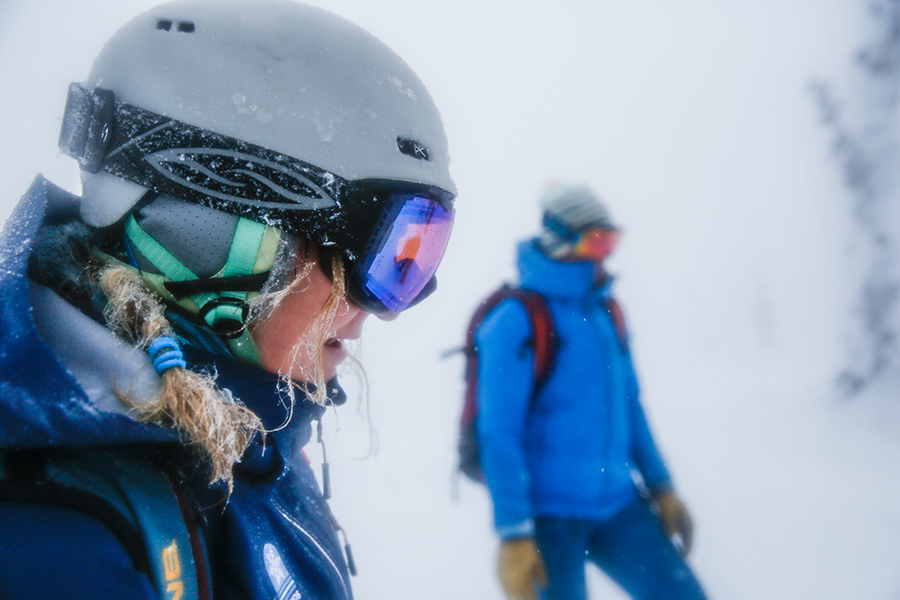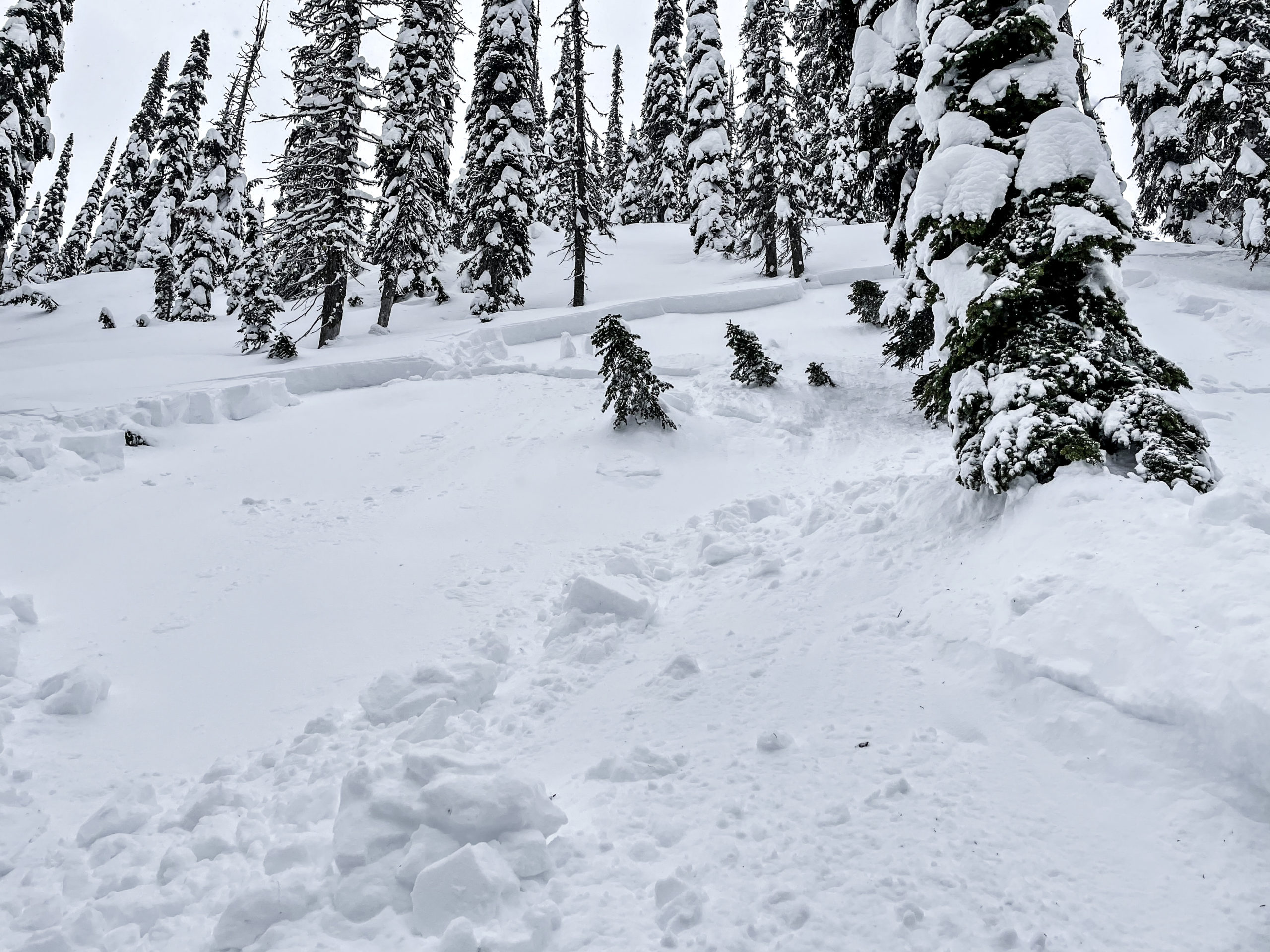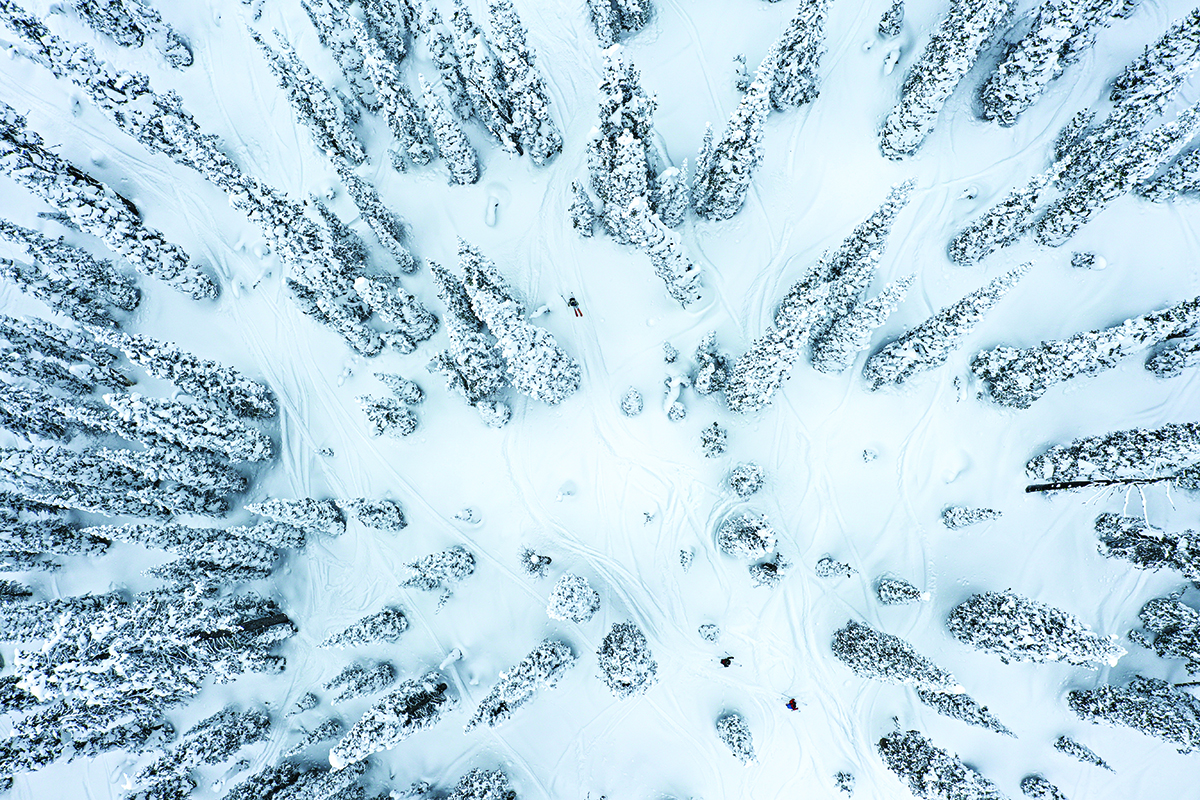Vulnerability in the Backcountry
Local avalanche educators launched a new Community Fireside Chat series this year to promote an open dialogue between backcountry users and professionals, allowing people to share their traumatic avalanche accidents while passing on knowledge
By Maggie Dresser
It happened just like the descriptions I’ve read in the avalanche books. Moments after I heard what sounded like a gunshot echo from above, the snow broke around me like a pane of glass as I skied across the slope.
Then it felt like someone ripped a rug out from underneath my feet. As the snow pushed my body beneath the surface, I remember thinking this was a stupid way to die — that this situation could easily have been avoided. I only told one person where I was going that day and I wondered how long it would take for anyone to realize I hadn’t returned home. At least my avalanche transceiver was turned on and search teams would eventually be able to recover my body.
When the momentum stopped, I was buried up to my neck, just beneath the snow surface. I stood up, unscathed, and looked above me to find a 30-foot-wide by 30-foot-long avalanche that had just sent me for a ride.
Less than a minute earlier, I remotely triggered an avalanche, meaning it fractured a distance away from me. The avalanche slid in an unusual spot, during an unusually unstable year and I was lucky to ski away from the debris pile. Especially since I was alone on that President’s Day in 2021.
In the hours leading up to the avalanche, on the morning of Feb. 15, I woke up to light snow feeling determined to ski in Whitefish Mountain Resort’s side country. I checked the weather, read the avalanche forecast and made final futile attempts to recruit ski touring partners for the day. Without much thought or apprehension, I packed up my touring gear and headed out on what I thought would be a simple solo adventure in Ghoulie’s, a popular backcountry zone bordering the ski resort.
This was the second time I had ventured into avalanche terrain by myself since I bought my first pair of alpine touring skis nearly a decade ago. The first time was a few weeks prior in the same zone. Although I had done it once before, this was not my normal routine.
But 2021 was not a normal year. We were a year deep into a global pandemic, I only had a few touring partners since moving to the Flathead in 2019, and feelings of frustration and impatience overpowered logic.
My decision to venture out into the backcountry by myself will traumatize me forever. A year has passed, and I haven’t returned to Ghoulie’s. I can’t watch a video of an avalanche fracturing without my stomach dropping, and I think about the worst-case scenario every time I’m in the backcountry.

I shared this story last December at a virtual event hosted by Friends of the Flathead Avalanche Center (FOFAC) and local psychologist Sara Boilen. In the Flathead’s first Community Fireside Chat, avalanche educators established an open dialogue surrounding close calls and near misses while recreating in the backcountry, giving people like me an open floor to share their experiences.
“My intention is to create a community in which we talk about the hard things and learn from them,” Boilen said.
Last year during one of the nation’s deadliest avalanche years, which included 37 fatalities in the United States compared to the national average of 27.5, Boilen’s friend, an experienced backcountry skier from Whitefish named Kim Givler, approached her with an idea to create a safe space in which to talk about these types of incidents more openly.
“It’s important for the person who had the experience but it’s also important for the people who weren’t there to have the opportunity to learn,” Boilen said. “The forecasters and avalanche professionals tend to hear about the incidents and get a lot of information, so we’re just growing the gap between the knowledge that the professionals have and the everyday users.”
The Fireside Chat series brings together the victims to talk about their incident, a Flathead Avalanche Center (FAC) forecaster to provide background information about the snowpack conditions leading up to the avalanche, and Boilen to mediate the conversation while bringing psychological insight and creating a judgement-free environment.
“We followed the footsteps of other avalanche centers that were offering the same sort of thing,” FOFAC Education Coordinator Meg Killen said. “It came to life last winter with the amount of avalanche fatalities. People were freaked out and we thought we should be talking about this as a community.”
Even in the professional avalanche industry, integrating open discussions surrounding trauma has been a slow process spanning several decades. But the evolution of education and curriculum has come a long way, and personal debriefs of near-misses are now part of entry-level professional courses and are becoming common practice.
“As an industry, we pay a lot more attention to close calls and red flags,” FAC Director Blase Reardon said. “There’s much more of a culture of examining those close calls – but that’s after a number of workers have been killed in avalanches.”
Today, there’s a database that catalogs near-misses involving avalanche professionals, which allows industry leaders to study and learn from those patterns. But Reardon says there are still some old school professionals who view avalanche accidents through a different lens and see it as part of the job.
“I don’t think people ever talked about it,” Reardon said. “I think there was more shame and it’s really easy to feel embarrassed, but I think the industry has gone a long way in taking away that stigma.”
As the professional avalanche industry evolves into a more communicative and judgement-free atmosphere, Reardon and educators in the Flathead are working to destigmatize those feelings among recreational backcountry users. Over the years, Reardon has edited hundreds of accident reports, talked to hundreds of people involved in fatal accidents or near-misses and he’s co-authored several accident case studies.
“The one thing that strikes me in almost every conversation is how powerful those experiences and emotions are — even decades later,” Reardon said. “There’s a lot of grief, there’s a lot of trauma and it lingers.”
While these emotions are difficult to talk about, educators agree that it helps others learn, and it’s important to remove barriers like shame to allow people to feel vulnerable without judgment.
“When we have that shame, we lose out on valuable learning opportunities,” Boilen said.

On March 22, the third and final edition of this season’s Fireside Chat series will unfold in a slightly different format than the previous two discussions, with event organizers talking about their own near-miss avalanche incident.
In February, Boilen and Killen were skiing in a party of four when they triggered a slide in an unfamiliar area during a storm, which they estimate propagated half the length of a football field — 50 yards — after they failed to check their map to see if they were about to encounter avalanche terrain.
“The powder fever took over,” Killen said. “I think the biggest thing for me is just that self-check-in. What’s my objective right now? For me, I always want to say the objective is to get home safely. For whatever reason, that just escaped me for a couple of minutes.”
Instead of Boilen’s usual role as the facilitator, she and Killen will model a debrief about the avalanche incident they were involved with in the Whitefish Range and show audience members how to talk to each other following a traumatizing event, and explain why that process is important.
“It’s hard,” Killen said. “It’s a little nerve wracking and scary but at the same time it’s a great opportunity to share that even people who have the knowledge and the education still make mistakes.”
After participating in the first Fireside Chat where Reardon offered his forecasting expertise, he’s received positive feedback from the community, and he thinks people are learning valuable lessons as backcountry users continue to engage with the avalanche center, which he says is also important for forecasting.
Unlike some avalanche centers, the FAC encourages skiers and snowmobilers to submit individual observations, which helps inform both forecasters and members of the public about the snow conditions. Submissions can include as much or as little detail as the observer wishes, and they help break down isolated areas within a massive forecasting region, which includes Glacier National Park and the Flathead, Swan and Whitefish ranges.
“We’ve worked hard to cultivate that culture,” Reardon said. “We value what people have to say. We have an 1,800-square-mile forecast area and we can’t get everywhere. We rely on those observations to put out a quality product.”
Reardon has seen the number of public observations double in the last five years and he says it increases 5% to 10% every year. Meanwhile, the avalanche center works hard to make people feel comfortable with their submissions and not feel intimidated. People’s names are never included in what the public sees and the center allows anonymous observations; however, Reardon said says it’s important to include contact information even though it’s not required.
“When we contact them, it’s to learn about what happened,” Reardon said. “We are not the fun police — all of us at the forecast center have been involved in our own near-misses or accidents. There’s no shaming and we want to learn more so we can help others stay safe.”
As the season winds down, the Flathead’s avalanche educators continue to bridge the gap between professionals and recreational backcountry users and they have plans to host in-person Fireside Chats for the 2022-23 season to allow even more engagement.
“The way to reduce shame is through connection and being vulnerable and if we can be vulnerable as a community, we can build connection and grow together,” Boilen said.
To register for the third and final Fireside Chat or view the previously recorded chats, visit flatheadavalanche.org. You can also find the latest avalanche forecast on the site. Daily forecasts will end on April 10. Forecasts will continue twice weekly until early May.